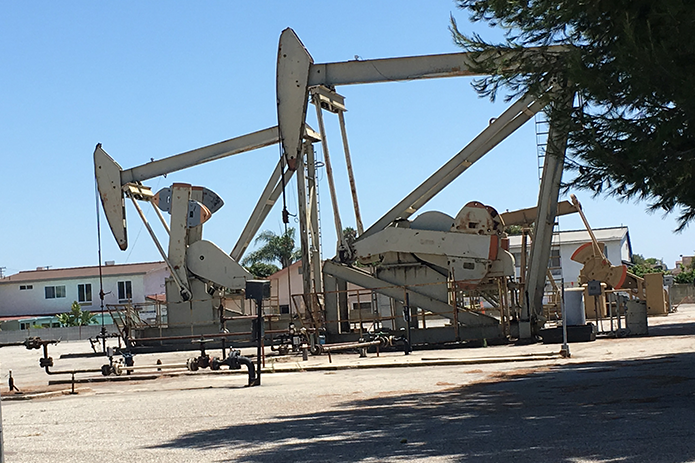Report Highlights Pollution Risk to Residents near California Oil and Gas Facilities; Calls for Full-Time Pollution Monitoring and Public Data Disclosure
— New lower-cost, 24-7 digital technology can alert neighbors and companies to risks, close data divide —
LOS ANGELES – CA – February 20, 2018 – (HISPANICIZE WIRE) - Nearly one million Californians living within half-a-mile of the state’s 54,000 active oil and gas wells may face elevated health risks due to pollution from those operations. But a report released today by Environmental Defense Fund says a new wave of lower-cost digital monitoring technology could give them new peace of mind by allowing companies and regulators to keep a 24-hour lookout for leaks and other dangerous emissions.
The report includes 11 recommendations for state and local officials, communities and businesses to accelerate the deployment of real-time monitoring solutions at oil and gas facilities, starting in historically underserved communities and communities facing the highest risk from nearby oil and gas operations. They also encourage operators to share their knowledge and experience with monitoring solutions.
“Reliable, inexpensive new technologies give us power we didn’t have before to track and measure pollution at these sites, and to spot emergencies like the Aliso Canyon disaster before damages start to pile up,” said Timothy O’Connor, Director of EDF’s Oil and Gas program in California and lead author of the report. “People shouldn’t be kept in the dark about their air quality, or have to wait for another disaster to see some action. Companies and safety regulators have a laundry list of reasons to start using these solutions now and help ensure clean operations.”
The EDF report, along with a comprehensive new technical analysis by the consulting firm Ramboll Environ, looks at the industry and community benefits of deploying continuous pollution monitors in California, particularly in Southern California where nearly 600,000 people live within half a mile of one of the region’s 3,500 active oil or gas facilities. Recent studies indicate oil and gas facilities can emit significant amounts of volatile organic compounds and benzene that are often difficult to spot but which can cause health problems like asthma and cancer. The facilities also emit methane, a potent climate pollutant.
Regulators typically track air pollution at a regional level, and require pollution reporting from only the largest facilities, which means hotspots and other acute issues at the local or neighborhood level are easily overlooked. Localized measurements are sometimes taken by concerned citizens or as a result of litigation, but only on a very limited scale for limited periods of time. As a result, many communities are calling for new pollution data from oil and gas sites to be made public.
Full time monitoring might have been considered too difficult or expensive in the past. But just as breakthroughs have transformed computers and cell phones, new monitoring technology is changing the equation, making it possible to continuously monitor pollution at the facility level.
EDF and its partners are responsible for two initiatives – the Methane Detectors Challenge and Mobile Monitoring Challenge – that help accelerate development and deployment of new monitoring technologies to keep watch for pollution at oil and gas facilities.
These vast new data streams open up new and better ways to reduce emissions and health risks.
“Policy that actually requires polluters to have monitoring and make that data publicly available, that would be a game changer,” said Paul Robinson, a medical geographer and professor at the Charles R. Drew University School of Public Health in Los Angeles. “It’s not until you place continuous monitoring that you can actually determine real exposure in a particular community.”
Reducing Risk
After the massive 2015 gas leak at the Aliso Canyon storage facility pumped over 100,000 tons of methane and other pollutants into the Southern California skies — forcing residents to evacuate and sending many to seek medical care — regulators began requiring the state’s 12 gas storage fields to install continuous pollution monitors. These have already helped detect unexpectedly high concentrations of methane, but the report says that similar regulations for tens of thousands of active oil and gas wells in the state are practically non-existent.
Leveling the Playing Field
Due to the extreme proximity of many oil and gas sites to people, the Los Angeles and Central Valley areas are in immediate need of widespread, continuous air pollution monitors. A part of Los Angeles is located on the country’s largest urban oilfield – and the number of people living in close proximity to an active oil or gas site is three times higher than the national average. The majority of these facilities are located in traditionally underserved, lower-income communities, with minimal resources to address health concerns related to oil and gas pollution.
“I hope the air we’ve been breathing for years isn’t hurting us, but I just don’t know and I’m taking a gamble right now,” said Lloyd Duvernay, a resident of Gardena California who lives just a few feet from an active oil well. “If there was something that could tell [regulators] there was a problem, so it wasn’t on me to call, I think that would be a good thing.”
To learn more about the benefits of installing continuous pollution technology, watch the Technology for Change video series at edf.org/TechForChange.
About Environmental Defense Fund
Environmental Defense Fund (edf.org), a leading international nonprofit organization, creates transformational solutions to the most serious environmental problems. EDF links science, economics, law and innovative private-sector partnerships. Connect with us on our Energy Exchange blog, Twitter and Facebook.



